Combing through a treasure trove of boxes found in the Rare and Distinctive Collections of the University of Colorado Boulder Norlin Library feels like a scene from Indiana Jones. The smell of aging paper – sweet and earthen – emanates as each box is unloaded and unpacked. Documents creak with age, as records, photographs and letters open a window to the past.
The few dozen boxes stored in the library archives offer glimpses into the rich history of the university’s health sciences programs and their evolution, culminating in the CU Anschutz Medical Campus today. To mark the first CU Anschutz History Day celebration, the following selections from these materials provide a peek at that story of growth and the people behind the transformation.
1900s medical school student records
One of the earliest items in the collection, a large hardcover book dating back to the turn of the 20th century, records life at the CU School of Medicine. A variety of student records fill the pages, including grades, registration information, course selections and graduation requirements. Tuition (paid by cash) was $37.50 in 1901.
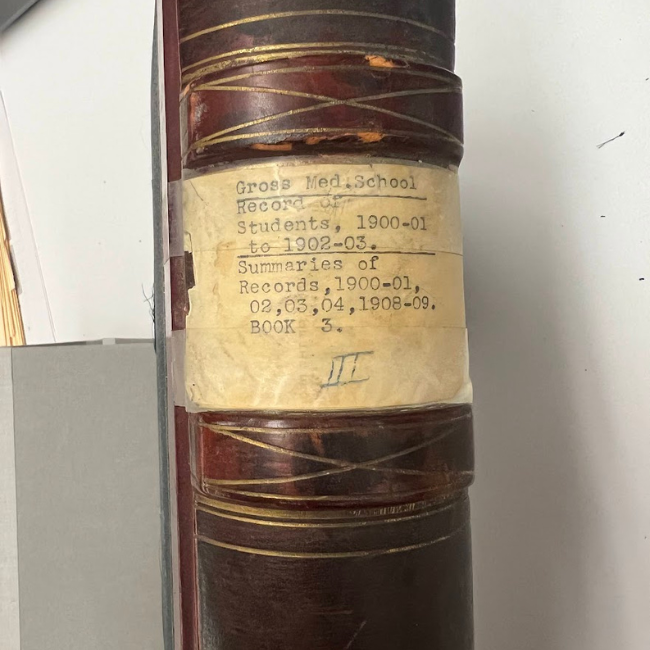
The student records book from the early 20th century.
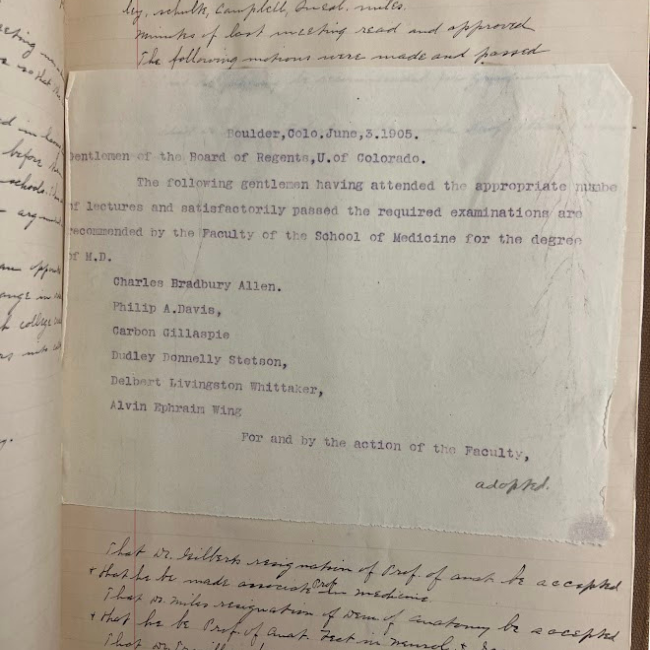
Records are a mix of handwritten and typewriter notes.
Service during World War I
School of Medicine leadership and faculty participated in the creation of and subsequent service at Base Hospital 29 during the First World War alongside U.S. Army leadership and the Red Cross.
The hospital was organized in Tottenham, London, and staff cared for American soldiers that served in the 27th and 30th Divisions of the British Army. Some other members from Base Hospital 29 and CU served in France at the same time. Following the Armistice in November 1918, the hospital was demobilized, and the unit returned to Denver the following March.
Celebrating CU Anschutz History Day
On Tuesday, Nov. 19, CU Anschutz will celebrate its inaugural history day. A panel and luncheon alongside two walking tours will be part of the celebration. Find more information here.
Items from this era in the collection include saved programs from the time CU personnel served in London, patient treatment counts from a reporter-style notebook, photographs from the unit’s training period and various newspaper clippings.
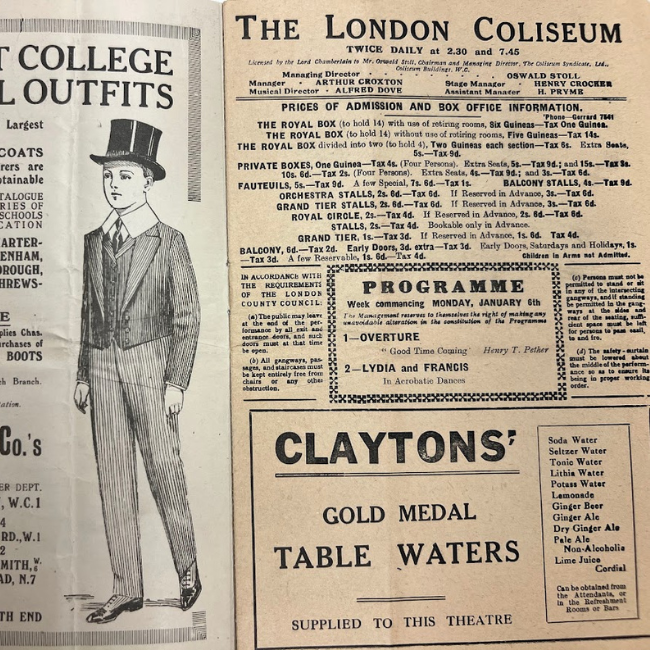
University of Colorado personnel who served in London during WWI brought home pamphlets and mementos.
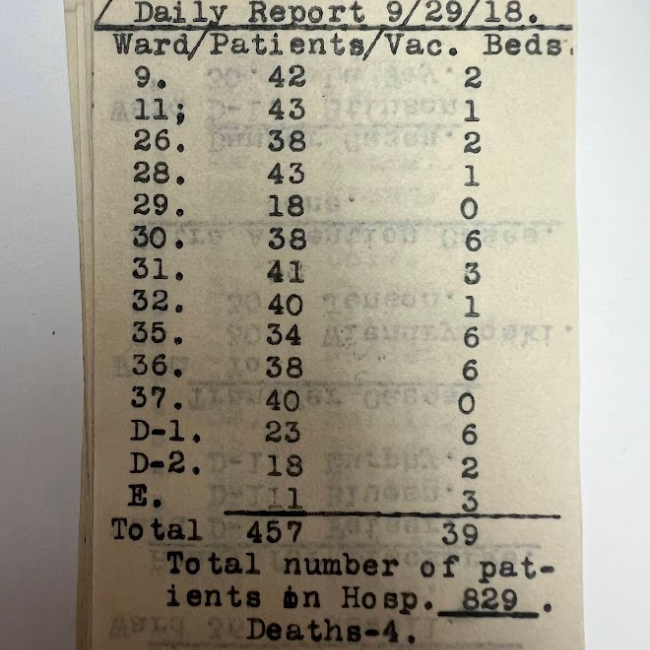
Stacks of daily patient reports from Base Hospital 29 can be found in the archives.

Nursing staff highlighted in a Base Hospital 29 publication.

A copy of the Rocky Mountain News From July 1918 shows CU personnel stationed in France.

Several WWI era photographs of CU personnel from Base Hospital 29 can be found in the archives.

Several WWI era photographs of CU personnel can be found in the archives.
CU health programs in the Pacific during World War II
As tensions increased prior to World War II, university officials worked with the Army to reorganize Base Hospital 29. The new unit, which was to be called General Hospital 29, featured School of Medicine faculty and alumni serving together. It was officially activated on Sept. 1, 1942. A major initiative at the time, the CU School of Medicine served as the only medical college in the Rocky Mountain region until 1944.
A year later, the unit departed from San Francisco to the Pacific theater of the war. Aboard the former Dutch liner vessel Noordam, the unit sailed to New Caledonia – a collection of islands off the east coast of Australia – arriving at its destination on Nov. 21, 1943. Constructing medical facilities proved to be an arduous task given the climate and terrain, but a few short weeks later, the hospital welcomed its first patient on Dec. 3. One week later, the patient count exceeded 900.
The personnel faced challenging conditions for treating patients from across the Pacific theater, from weather – with temperatures sometimes exceeding 125 degrees Fahrenheit and seasonal typhoons – to construction and logistics challenges. Despite the hurdles, the service personnel operated an extensive physical therapy and rehabilitation program for GIs that paired physical wellness with craft activities to keep minds stimulated as part of a total health approach.
More CU Anschutz Campus History
Interested in learning more about the history of the CU Anschutz Medical Campus? Find a detailed campus history and timeline to dig deeper into the story.
In early May of 1945, the 29th General Hospital was alerted by military command to prepare for movement as VE Day – victory in Europe – passed and the focus of the war shifted to the Pacific theater. By June, most of the service members departed New Caledonia – with nurses and support personnel remaining – aboard a vessel that brought them as part of a convoy to Okinawa, Japan.
For a time, personnel felt as if they were being held in limbo as they awaited orders to set up a more permanent facility on Okinawa or elsewhere prior to a final invasion of the Japanese islands of Kyushu and Honshu. However, following the atomic bombings of Hiroshima and Nagasaki, the anti-aircraft guns on Okinawa rang out in celebration – initially causing shock amongst the 29th General Hospital personnel until word spread that Japan had surrendered.
Notably, throughout the war, Dean of Faculty Maurice Rees kept in close contact with several members of the CU faculty who were serving abroad. Many of his telegrams checking in on faculty at the 29th General Hospital can also be found as part of the collection – keeping a close connection to home and Colorado while half a world away.
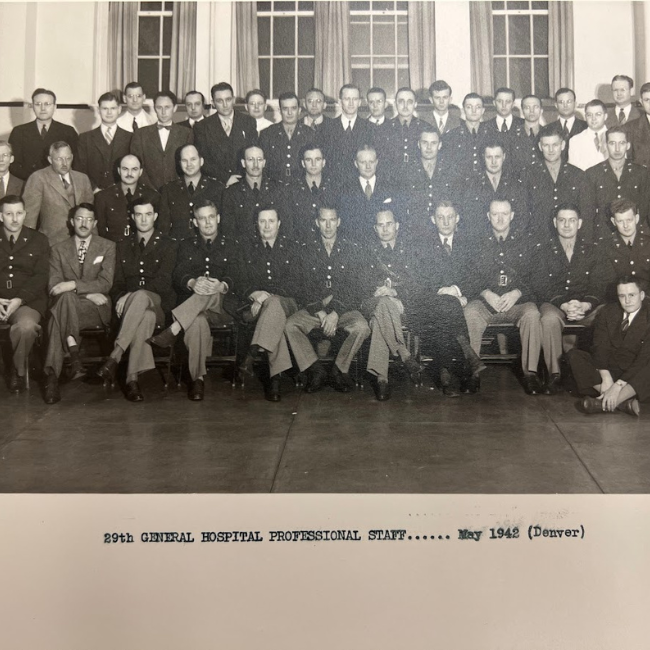
University personnel that made up the early formation of the 29th General Hospital.
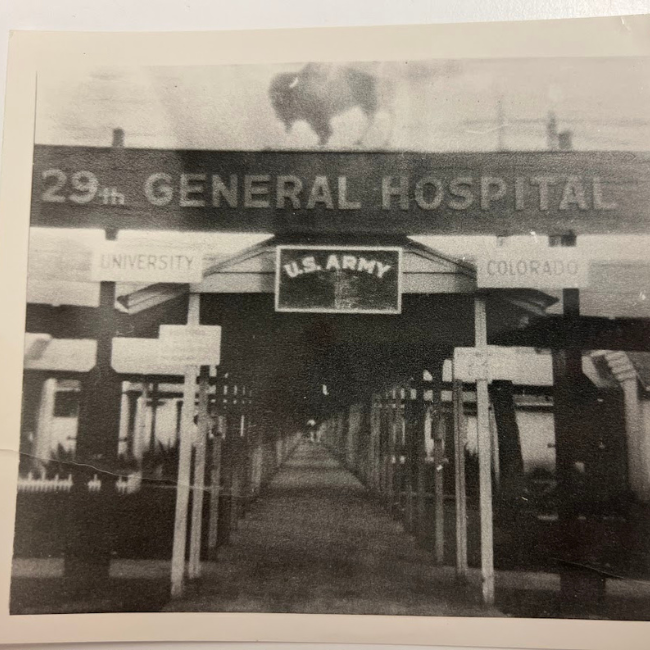
A photo showing the entrance to the 29th General Hospital in New Caledonia. A Buffalo atop the signage marks the presence of CU doctors and faculty.

Slice of life photographs from the 29th General Hospital show both the operations and medical mission.
.png?width=1200&length=1200&name=Untitled%20design(1).png)
Slice of life photographs from the 29th General Hospital show both the operations and medical mission.
.png?width=1200&length=1200&name=Untitled%20design(2).png)
Slice of life photographs from the 29th General Hospital show both the operations and medical mission.
.png?width=1200&length=1200&name=Untitled%20design(3).png)
Slice of life photographs from the 29th General Hospital show both the operations and medical mission.
.png?width=1200&length=1200&name=Untitled%20design(4).png)
Slice of life photographs from the 29th General Hospital show both the operations and medical mission.
.png?width=1200&length=1200&name=Untitled%20design(5).png)
Dean of Faculty Maurice Rees maintained close contact with university members from the 29th General Hospital.
Evolving approaches to health education
Following World War II, CU health programs would undergo a period of change and acceleration not seen in decades. The archive’s materials reveal large strides in the core health curriculum. A short book of the 1949 curriculum includes the foundations of modern medicine. Fast forward to 1985, and the curriculum reflects adaptation, reinvention and increased specialization to meet the changing needs of Colorado and its patients and students.
.png?width=1200&length=1200&name=Untitled%20design(12).png)
The 1949 CU School of Medicine coursebook cover.
.png?width=1200&length=1200&name=Untitled%20design(6).png)
The 1949 coursebook alongside the 1985 coursebook for first year students – showing the evolution of teaching the health sciences.
-1.png?width=1200&length=1200&name=Untitled%20design(7)-1.png)
The 1949 coursebook alongside the 1985 coursebook for first year students – showing the evolution of teaching the health sciences.
.png?width=1200&length=1200&name=Untitled%20design(9).png)
The 1949 coursebook alongside the 1985 coursebook for first year students – showing the evolution of teaching the health sciences.
High tensions and political cartoons
The second half of the 20th century also saw changes to the healthcare ecosystem in Denver, as a split occurred between the university and Denver General Hospital, which previously had teaching and patient care agreements. The dispute began with differences in opinion on who should be running the medical and surgical programs at Denver General, with the two eventually going separate ways in July 1961, after a previous 14-year agreement. Local political cartoons reflected the high tensions of the time.
.png?width=1200&length=1200&name=Untitled%20design(10).png)
Denver Post political cartoons from 1960 and 1961 commenting on the dispute between Denver General and the university.
.png?width=1200&length=1200&name=Untitled%20design(11).png)
Denver Post political cartoons from 1960 and 1961 commenting on the dispute between Denver General and the university.
Denver campus builds a national reputation
A post-World War II investment in the health sciences provided a boon to CU’s education and research missions. The growth led to an expansion of the CU Health Sciences Center at the intersection of Ninth Avenue and Colorado Boulevard in Denver. Archive materials from this time show an increased presence in external outreach – annual reports, journals, newsletters – with more focus on advances in research.
.png?width=1200&length=1200&name=Untitled%20design(13).png)
The archive contains several editions of intracampus communications which show a changing publication and communication styles across the decades.
.png?width=1200&length=1200&name=Untitled%20design(14).png)
The archive contains several editions of intracampus communications which show a changing publication and communication styles across the decades.
.png?width=1200&length=1200&name=Untitled%20design(15).png)
A copy of the 1973-74 Annual Report for the University of Colorado Medical Center.
.png?width=1200&length=1200&name=Untitled%20design(16).png)
A copy of the 1973-74 Annual Report for the University of Colorado Medical Center.
.png?width=1200&length=1200&name=Untitled%20design(17).png)
A copy of the 1973-74 Annual Report for the University of Colorado Medical Center.
.png?width=1200&length=1200&name=Untitled%20design(18).png)
The archive also shows the growth of published materials from across the various health sciences schools.
.png?width=1200&length=1200&name=Untitled%20design(19).png)
The archive also shows the growth of published materials from across the various health sciences schools.
.png?width=1200&length=1200&name=Untitled%20design(20).png)
The archive also shows the growth of published materials from across the various health sciences schools.
‘Comfort, heal, relieve’: an ongoing tale
The archived materials provide a glimpse into the vibrant history of research, education and care at a university that has been at the forefront of medicine for over 140 years.
Across the decades, the tale mirrors from past to present a collection of dedicated professionals working to advance and improve healthcare outcomes amid changes in circumstance – all while educating the next generation of leaders. Even the historic ties to the armed services continue, as CU Anschutz calls the former Fitzsimons Army hospital base home. The slogan of that former Army hospital reiterates the CU Anschutz mission today: comfort, heal, relieve.
Improving health through research, care and training of exceptional health sciences professionals never goes out of style.
A special thanks to the staff at Norlin Library at CU Boulder for making this story possible.
.png)

